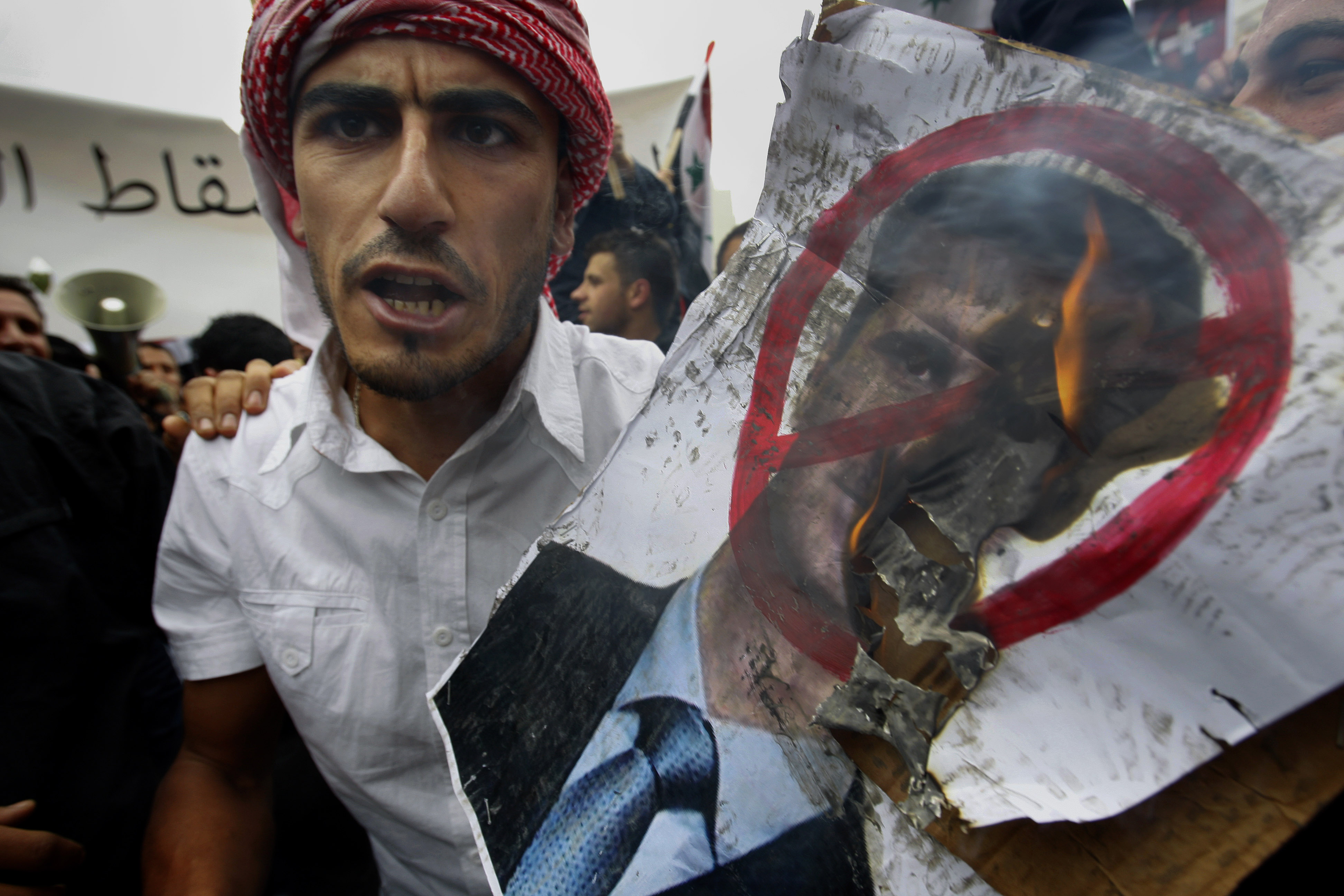 A Syrian protestor shouts slogans as he burns a poster of Syrian President Bashar Assad during a demonstration in front of the Syrian embassy, in Nicosia, Cyprus Friday, April 22, 2011. Several hundred Syria protesters resident in Cyprus, have called for Syrian President Bashar Assad's ouster. (AP Photo/Petros Karadjias)
A Syrian protestor shouts slogans as he burns a poster of Syrian President Bashar Assad during a demonstration in front of the Syrian embassy, in Nicosia, Cyprus Friday, April 22, 2011. Several hundred Syria protesters resident in Cyprus, have called for Syrian President Bashar Assad's ouster. (AP Photo/Petros Karadjias)BASSEM MROUE, Associated Press
BEIRUT - Syrian security forces fired bullets and tear gas Friday on pro-democracy demonstrations across the country, killing at least 75 people - including a young boy - in the bloodiest day of the uprising against President Bashar Assad's authoritarian regime, witnesses and a human rights group said.
The protests, held every Friday, have become weekly bloodbaths as security forces try to crush the demonstrations. But the mounting death tolls have only served to invigorate a protest movement whose demands have snowballed from modest reforms to the downfall of the 40-year Assad dynasty.
More than 250 people have been killed over five weeks, human rights groups say.
"Bullets started flying over our heads like heavy rain," said one witness in Izraa, a southern village in Daraa province, the same region where the uprising kicked off in mid-March.
Amnesty International says at least 75 people have been killed. The human rights group cited local activists.
The protest movement has been the gravest challenge against the autocratic regime led by Assad, who inherited power from his father 11 years ago in one of the most rigidly controlled countries in the Middle East.
The uprising in Syria takes its inspiration from the popular revolts sweeping the Arab world. But there are significant differences in Syria that make the protest movement there all the more unpredictable.
The country's military structure is a key difference - unlike the armies of Tunisia and Egypt, Syria's military and security apparatus will almost certainly stand by Assad, at least for the time being.
That means there could be darker days ahead as the uprising gains momentum, something that has implications far beyond Syria's borders. Damascus stands in the middle of the most combustible conflicts in region because of its web of allegiances, from Lebanon's Hezbollah and Shiite powerhouse Iran.
On Friday, tens of thousands of people were protesting in the Damascus suburb of Douma, the central cities of Hama and Homs, Latakia and Banias on the coast, the northern cities of Raqqa and Idlib, the northeastern Kurdish region, and the southern province of Daraa.
As the protesters dispersed, the scope of the bloodshed began to emerge.
A video posted on the protest movement's main Facebook page showed a man carrying a bloodied boy near a building as another child could be heard weeping and shouting "My brother!"
Hospitals received scores of dead and gravely wounded.
Friday's witness accounts could not be independently confirmed because Syria has expelled journalists and restricted access to trouble spots. Witnesses spoke on condition of anonymity for fear of reprisals.
Assad has been trying to defuse the protests by launching a bloody crackdown along with a series of concessions, most recently lifting emergency laws that gave authorities almost boundless powers of surveillance and arrest.
He also has fulfilled a decades-old demand by granting citizenship to thousands among Syria's long-ostracized Kurdish minority, fired local officials, released detainees and formed a new government.
But many protesters said the concessions have come too late - and that Assad does not deserve the credit.
"The state of emergency was brought down, not lifted," prominent Syrian activist Suhair Atassi, who was arrested several times in the past, wrote on her Twitter page. "It is a victory as a result of demonstrations, protests and the blood of martyrs who called for Syria's freedom."
